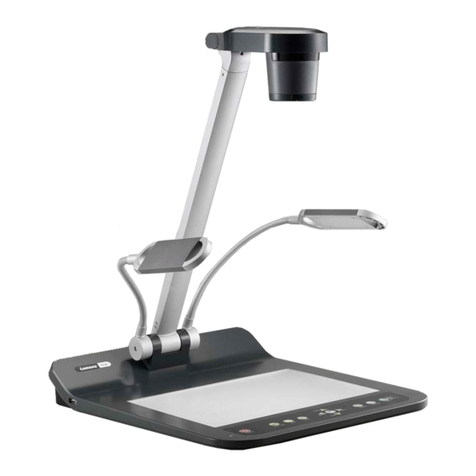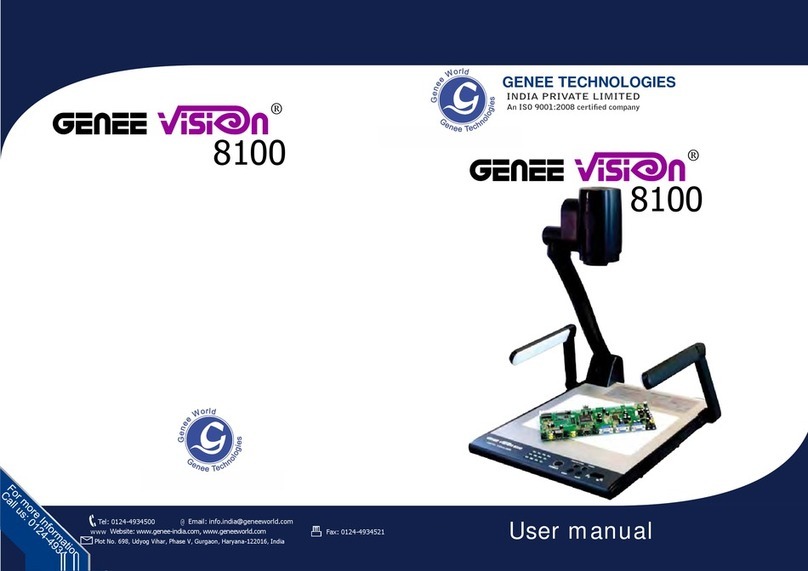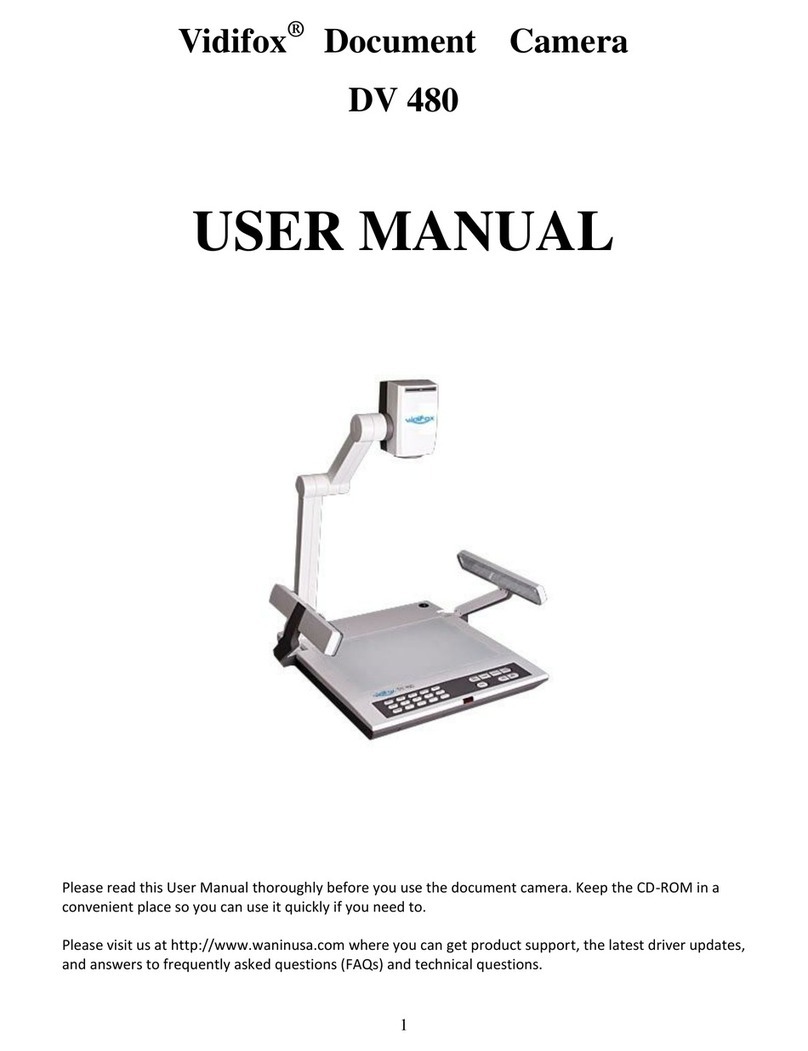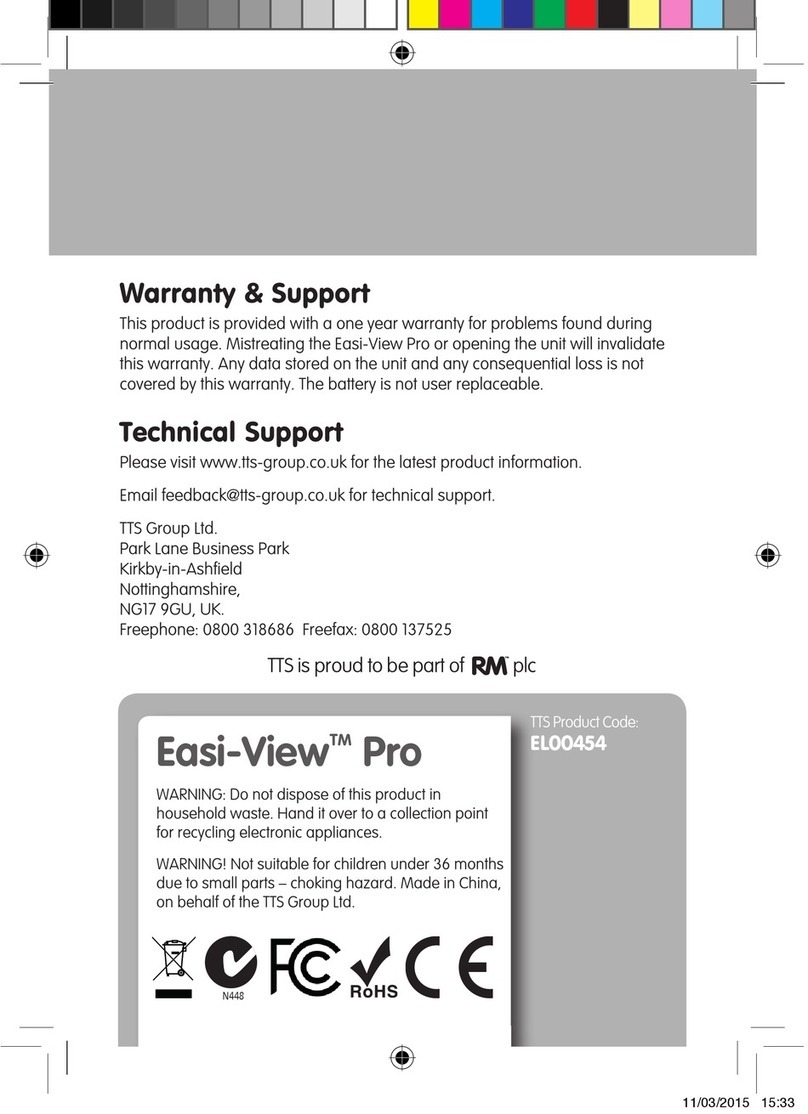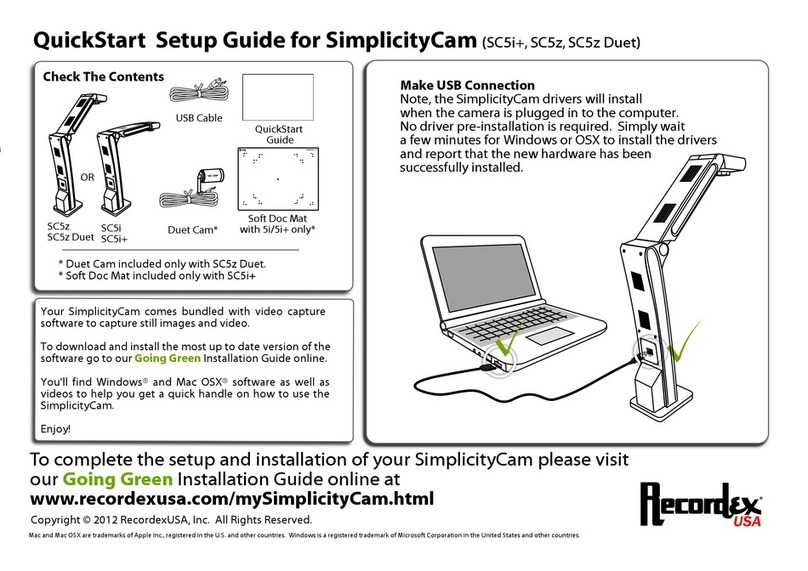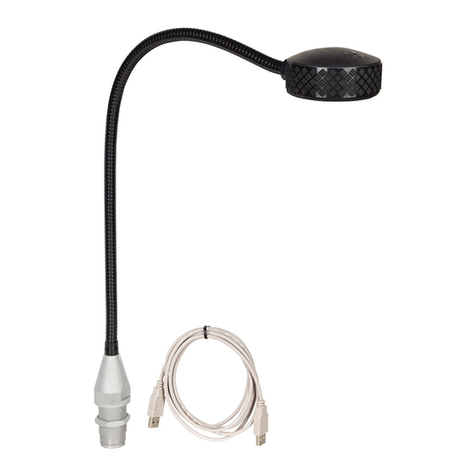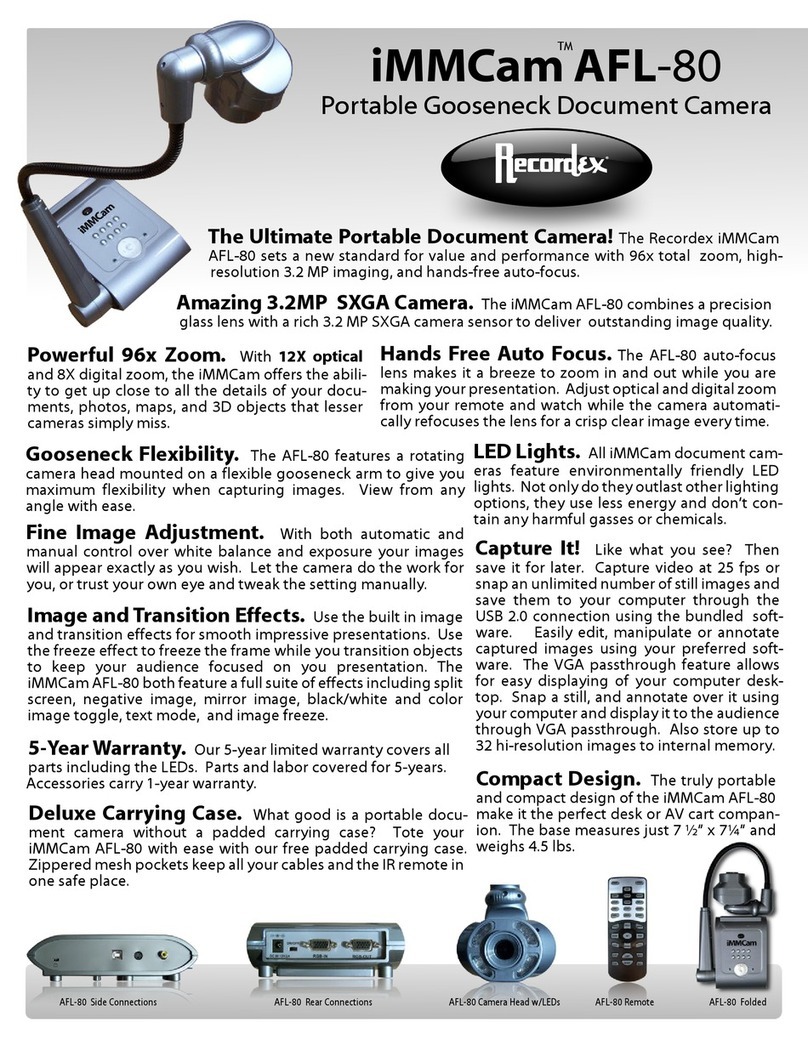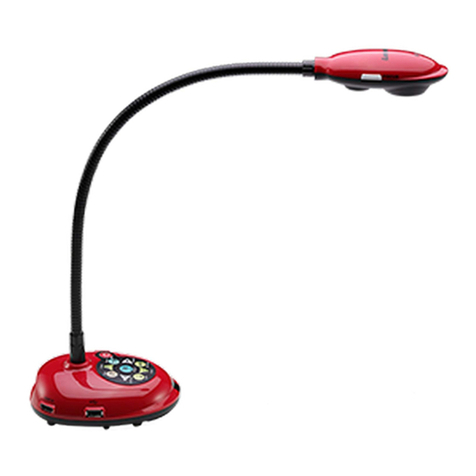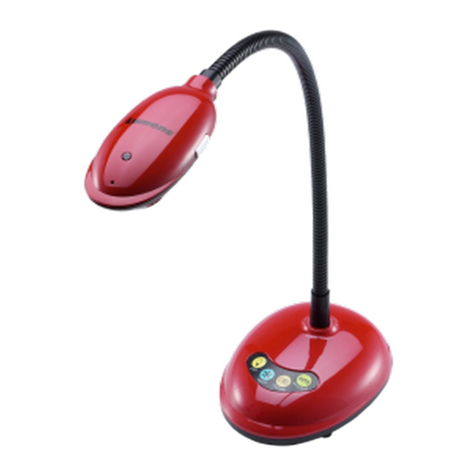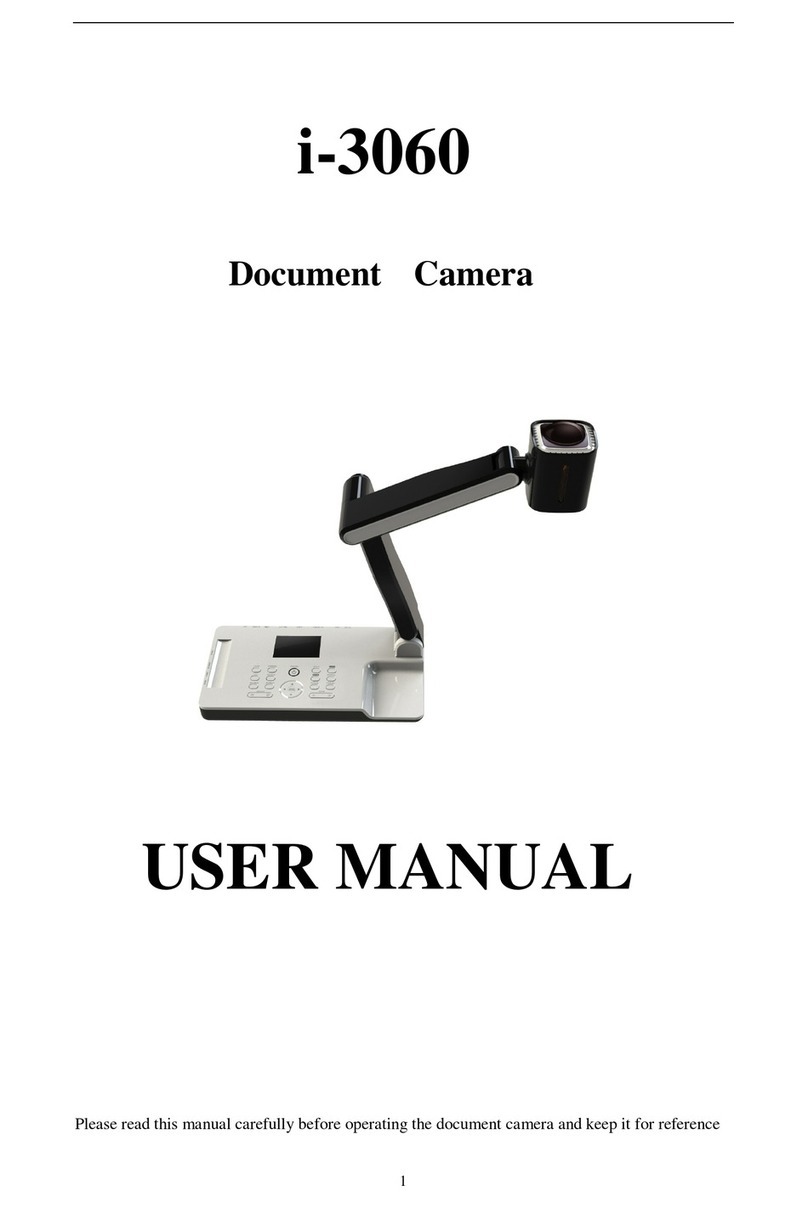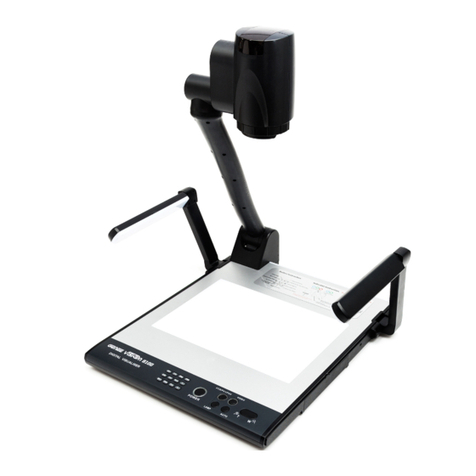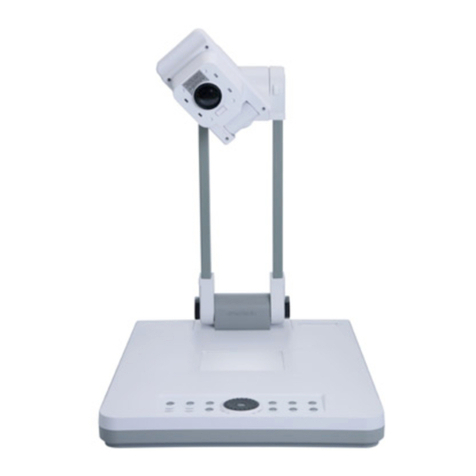6
5.ANNOTATION
The annotation function will be activated by connecting a USB mouse to the document camera.
We will see the following icons by clicking the left button on a mouse:
1. :Clicking this icon, the whiteboard function is activated. The image captured is now
subjected to annotation. To switch back to the real-time camera mode, click icon .
2. :Clicking this icon, the current image will be saved and annotation function activated.
In annotation mode, click the following icons to choose the color of annotating pen.
Yellow, Red, Blue.
3. :In annotation mode, click this icon to delete annotation, there are two types of deletion:
: area clear :all clear.
4. :In annotation mode, click this icon to choose the thickness of the pen, there are 3
options: Thin, Medium, Thick.
5. :Click to capture and save the image.
6. :Click to start recording, click again to stop recording and save the video clip.
7. :Click to recall the saved images or video clips, meanwhile the annotation function is
activated, click again back to camera image. Press and hold left key on mouse for at least
three seconds to delete this image.
8. :Click to rotate the image(90°,180°,270°)
9. :Click to go to control menu.
:Image zoom in and zoom out control
:Image brightness control
:Adjust focus manually
:Perform white balance and focus automatically











